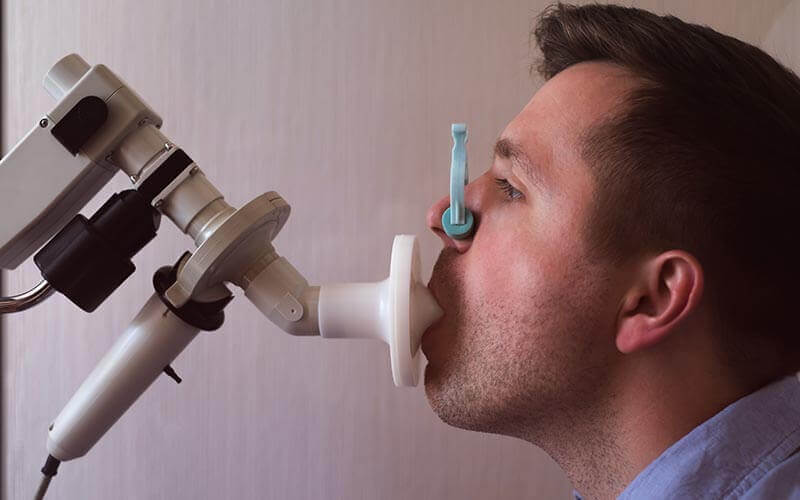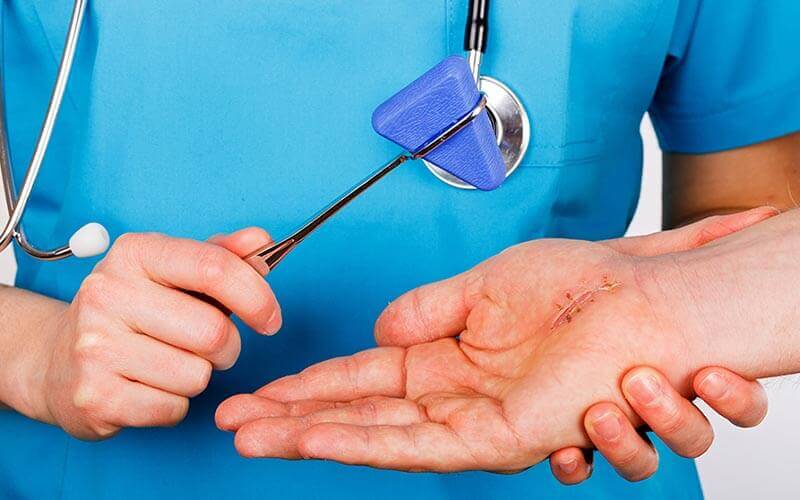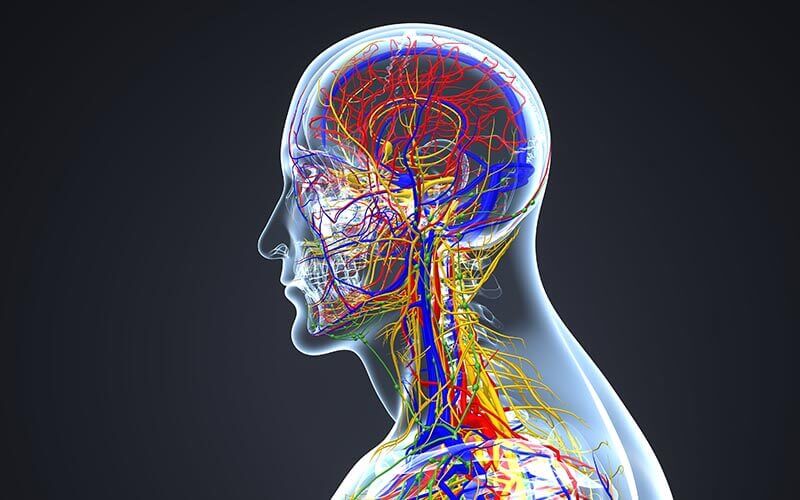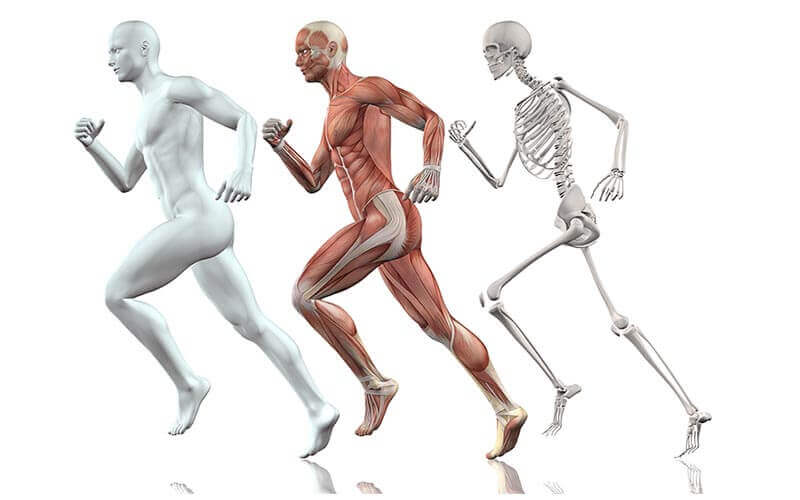
RESTINGS METABOLIC RATE
The best way to learn more about your metabolism, specifically your metabolic rate (the rate at which metabolism occurs), is through an RMR test. Your resting metabolic rate (RMR) is the amount of energy (calories) your body burns while at rest.
WHAT CAN RMR HELP DIAGNOSE?
Metabolism is an essential function for weight management and general health. Measuring resting metabolic rate enables your doctor to determine whether metabolism is fast or slow. Furthermore, RMR testing reveals if the body utilizes carbohydrates or fats for energy. This information often helps to determine the number of calories a person needs to maintain and how many the person may need to lose or gain weight. In endocrinology, RMR is valuable to the diagnosis and management of conditions such as diabetes, heart disease, overactive thyroid, mitochondrial disorders, and COPD.
HOW IS RMR TESTED?
RMR testing is convenient and comfortable. The test is conducted in a seated position. The patient wears a mask that fits over the nose and mouth to enable us to measure oxygen intake and carbon dioxide output. No extra air is provided in the mask; air in the environment seeps through. Throughout the test, a member of our team will also monitor your heart rate and rhythm through EKG leads.
BENEFITS OF A RMR TEST?
Some of the benefits of having a Resting Metabolic Rate test include:
• Identifying whether you have a slow or fast metabolism
• Determining if you are a fat burner or sugar burner at rest
• Establishing the minimum number of calories you can eat without the risk of slowing down your metabolism
• Identifying the number of calories you burn on a rest day as well as an exercise day
SUDOMOTOR SCAN
WHAT DOES A SUDOMOTOR TEST MEASURE?

WHAT ARE THE BENEFITS TO A SUDOMOTOR SCAN?
We may recommend Sudomotor scans for a number of reasons. Ultimately, this diagnostic scan:
• Provides important data related to the peripheral autonomic nervous system and the potential for painful neuropathy.
• Facilitates the most accurate diagnosis of diabetic neuropathy compared to standardized testing.
• Provides valuable information related to the cause of peripheral neuropathy.
• Reaches high rates of sensitivity and specificity, related to the accuracy of test results.
• Evaluates autonomic and somatic nerve function (shown to be one of the best estimates of cardiovascular risk)
• Early intervention can greatly decrease the potential for severe and permanent nerve damage, which results in painful neuropathy.
• Supports fast adjustments to therapeutic care since it provides data related to the physical response of a treatment protocol.
SPIROMETRY
WHO IS A CANDIATE FOR A SPIROMETRY TEST?
A spirometry test is commonly used for patients with:
• Asthma
• Shortness of breath
• Emphysema
• Chronic cough
• Chronic obstructive pulmonary disease (COPD)
• Bronchitis
• Smoking, or exposure to secondhand smoke
Since the measurement process only takes a few minutes, this allows the patient to discuss the results immediately with their physician. Additional testing may be necessary in order to better diagnose chronic lung conditions such as asthma.

WHAT ARE THE RISKS OF A SPIROMETRY?
Generally speaking, a spirometry is a safe and fairly simple test. Due to the exertion involved, a patient may temporarily feel out of breath or dizzy. For those who have certain heart conditions or may have suffered a recent heart attack, a spirometry may not be performed.
NERVE CONDUCTION TEST
Nerve conduction testing, also known as a nerve conduction study (NCS), is a diagnostic test that determines the extent of nerve damage. Commonly referred to as a nerve conduction velocity, this test measures the speed at which an electrical impulse travels through a nerve.

WHAT CAN A NERVE CONDUCTION TEST DIAGNOSE?
We use nerve conduction studies for the evaluation of paresthesia (numbness, tingling, burning) and/or weakness of the arms and legs. Some of the common disorders we can diagnose or rule out by nerve conduction studies are:
• Peripheral neuropathy
• Carpal tunnel syndrome
• Ulnar neuropathy
• Guillain-Barré syndrome
• Facioscapulohumeral muscular dystrophy
• Spinal disc herniation
• Charcot-Marie-Tooth disease
• Sciatic nerve problems
ANS MONITORING
ANS monitoring stands for non-invasive autonomic nervous system monitoring. This diagnostic test is a fast, pain-free, and simple measure of health. Patients that have diabetes, hypertension, anxiety, or are pregnant often undergo monitoring.
WHAT IS AN ANS MONITORING TEST FOR?
• Detects and records variations in the R-R, or beat-to-beat, interval, and respiratory activity and plots this data.
• Data undergo spectral analysis to identify high- and low-frequency components of the heartbeat interval (HBI) plot.
• Performs spectral analysis of the respiratory signal to precisely locate the parasympathetic, or high-frequency, a component of the HBI signal.
• Respiratory activity analysis provides independent and more specific measurements of sympathetic activity and parasympathetic activity at rest to determine the balance between the branches, during individual challenges to each branch, and a combined challenge to both branches to detect degrees of neuropathy or ANS branch suppression or excess.

AM I A CANDIDATE FOR ANS MONITORING?
This is used with conditions including:
• Post-MI & other cardiac conditions
• Diabetes
• Hypertension
• Neurologic problems
• Syncope
• Pregnancy
• Anxiety/Stress
• Circulation problems
WHAT IS INVOLVED IN ANS MONITORING?
There are six challenges included in these tests:
1. Resting (initial) baseline measurements
2. The parasympathetic challenge of deep breathing
3. Return to baseline
4. The sympathetic challenge of a series of short Valsalva maneuvers
5. Return to baseline
6. Quick postural change, going from seated position to standing, followed by quiet standing
DIGITAL FUNDOSCOPY
HOW LONG DOES A DIGITAL FUNDOSCOPY TAKE?

WHAT IS THE RECOVERY FROM A DIGITAL FUNDOSCOPY?
Since you may have trouble focusing your eyes for several hours after your test, you may want to have someone drive you home. If you have dilated pupils, you’ll need to wear sunglasses when outside or in a brightly lit room.
If you didn’t have dilation, the bright light used in the test may cause some temporary after-images to show in your vision. These pass quickly.
THYROID ULTRASOUND
A thyroid ultrasound may be ordered if a thyroid function test is abnormal or if you doctor feels a growth on your thyroid while examining your neck. An ultrasound can also check an underactive or overactive thyroid gland.
WHAT IS A THYROID ULTRASOUND AND WHY IT IS IMPORTANT FOR YOUR THYROID HEALTH?
Ultrasound examination is the most accurate and useful imaging test to detect nodules or lumps within the thyroid gland. Ultrasound procedure uses sound waves to produce images of the thyroid gland and the images can be captured to assess the size, shape, structure and any abnormalities of the thyroid gland.
Accurate measurement of the size of the thyroid nodules can be made using ultrasound imaging. It also assists in the evaluation of the variations in the thyroid tissue such as enlargement caused by goiter and decrease in size caused by inflammation and can differentiate between the solid, fluid-filled or complex type of thyroid nodules.

WHY WOULD I NEED A THRYOID ULTRASOUND?
The reasons for the administration of a thyroid ultrasound are to diagnose dysfunction or suspected abnormalities of the thyroid gland. It may be used to:
• Determine the existence of a goiter, an enlargement of the thyroid gland
• Assess whether a lump has originated on the thyroid gland or elsewhere
• Determine whether a detected mass is growing
• Differentiate between cysts, filled with fluid, and solid masses
• Help determine whether an abnormal growth may be malignant
WHAT DOES A THYROID ULTRASOUND DETECT?
The role of ultrasound in the diagnosis of thyroid conditions is complex and involves detection of the thyroid and neck masses, distinguishing between benign and malignant nodules, and guidance during fine needle aspiration (FNA) biopsy and percutaneous treatment.
LABORATORY SERVICES

BODY COMPOSITION
HOW DOES THE BODY COMPOSITION ANALYZER TOOL WORK?

WHY IS MY BMI NOT ACCURATE?
Everyone knows the “one size fits all” approach of Body Mass Index (BMI) isn’t effective. BMI calculations don’t consider age, gender, frame size, muscle mass, or fat distribution. Yet, BMI is the weight/mass measurement used in a wide assortment of medical and health decisions.
WHY THE BODY COMPOSITION ANALYZER IS BETTER THAN BMI
Rather than simply taking a measure of weight, the Seca Body Composition Analyzer measures fat mass, fat-free mass, total body water, and the water in and outside of cells. It produces medically relevant results that have been validated against the medical science gold standard.
TM FLOW
